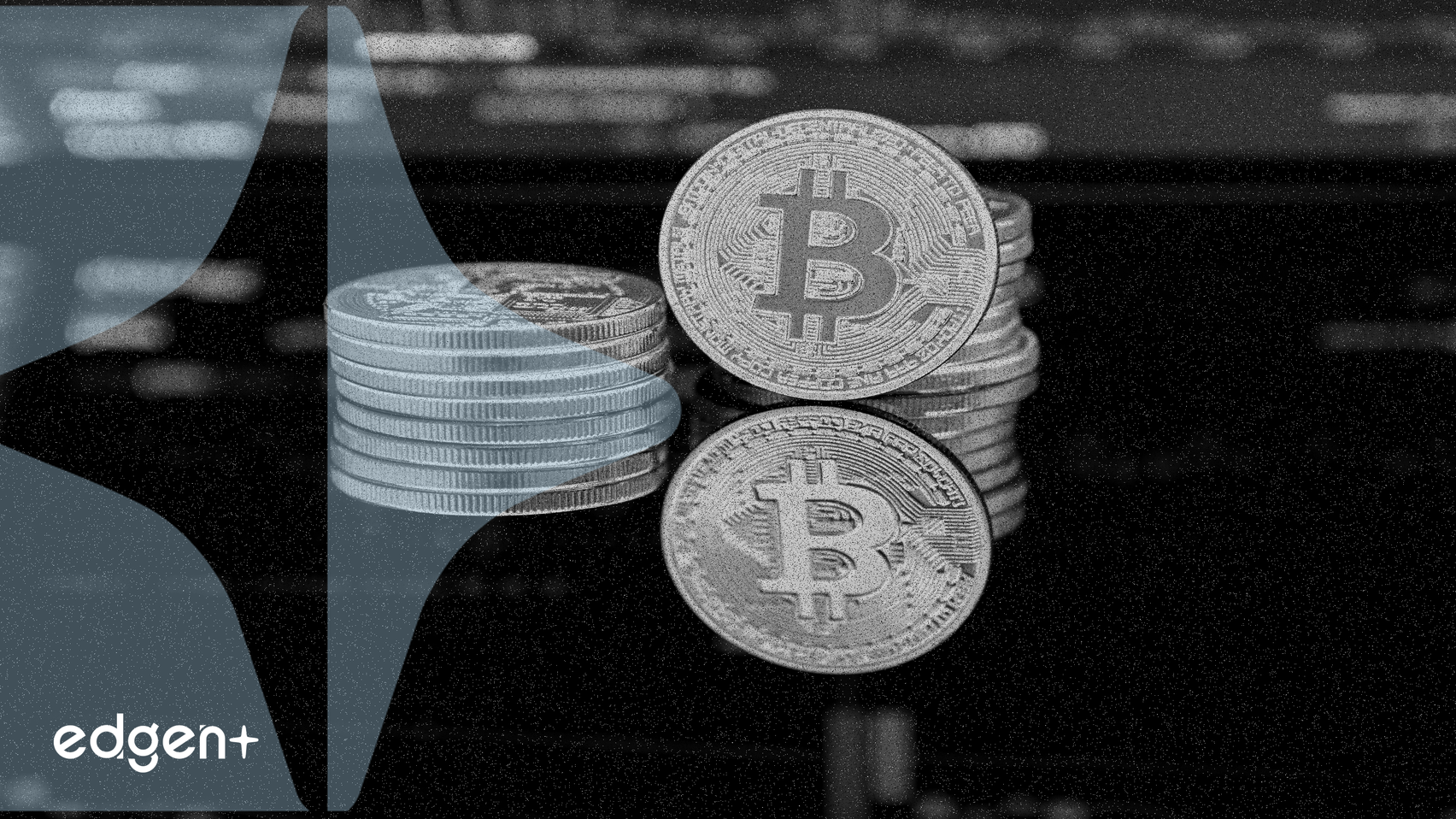Related News

Zcash Resurgence Reignites Debate on Bitcoin Privacy and OP_CAT Reactivation
## Executive Summary Zcash has observed growing momentum amidst heightened global interest in privacy-preserving digital assets. Concurrently, discussions within the Bitcoin development community have intensified regarding the potential reactivation of the `OP_CAT` opcode, aiming to augment Bitcoin's native privacy features and expand its smart contract functionalities. ## The Event in Detail **Zcash's Renewed Focus on Privacy** Zcash is experiencing a notable resurgence in 2025, driven by increasing demand for privacy-focused cryptocurrencies. Alex Bornstein, executive director of the Zcash Foundation, recently highlighted the protocol's distinctive market positioning and its application in humanitarian aid. This renewed interest is underscored by significant institutional investment, including **Winklevoss Capital's** commitment of over **$50 million** in Zcash through its new venture, **Cypherpunk**. This move emphasizes a strategic pivot towards "selective transparency," leveraging Zcash's viewing keys as a compliance-enabling feature rather than a privacy limitation, a response to evolving regulatory landscapes. **OP_CAT: A Historical Context and Modern Proposal** `OP_CAT`, short for "operation code concatenate," refers to a Bitcoin script opcode designed to combine two data values on the stack. Satoshi Nakamoto initially implemented `OP_CAT` but subsequently disabled it in 2010, alongside other opcodes, due to security concerns. These concerns centered on its potential to facilitate the creation of data-intensive scripts that could consume excessive network resources, posing a risk for denial-of-service (DoS) attacks, especially given Bitcoin's then-existing 2000-byte script limit. However, the **Taproot** upgrade in 2021 introduced a new size limit of 520 bytes for Taproot scripts, mitigating the original vulnerabilities associated with `OP_CAT`'s resource consumption. This development has rekindled interest in its reactivation. In October 2023, cryptographer Ethan Heilman and Botanix Labs lead engineer Armin Sabouri introduced **BIP 347**, a formal proposal to re-enable `OP_CAT` via a soft fork to the Bitcoin network. This proposal has garnered support from key figures and groups, including **Taproot Wizards** and **Botanix Labs**, who advocate for its potential to significantly enhance Bitcoin's capabilities. ## Financial Mechanics and Technical Implications **Functionality and Advanced Use Cases of OP_CAT** The reactivation of `OP_CAT` would allow Bitcoin developers to concatenate two data points, enabling the creation of more dynamic and flexible smart contracts. This functionality would facilitate complex transaction conditions previously unattainable. Crucially, the concatenated elements of Bitcoin Script can emulate arithmetic and multiplication features, permitting sophisticated scripting without requiring lengthy, data-intensive code that is more prone to bugs. `OP_CAT` is projected to enable a suite of new functionalities on Bitcoin, including the development of advanced covenants, zero-knowledge rollups (**ZK-rollups**), and improved layer-2 networks. StarkWare CEO Eli Ben-Sasson has indicated that `OP_CAT` could go live within the next 12 months, which would enable **Starknet** to achieve native settlement on both Bitcoin and Ethereum. **Security and Efficiency Considerations for Reactivation** While the Taproot upgrade has addressed the primary security concerns that led to `OP_CAT`'s initial disabling, its reintroduction necessitates rigorous testing and analysis. The aim is to ensure that the opcode does not inadvertently introduce new vulnerabilities. Although `OP_CAT` can lead to larger scripts by concatenating data values, the current scripting environment post-Taproot is considered more robust in handling such functionalities securely, minimizing concerns about its impact on network efficiency and transaction throughput. ## Market Implications and Broader Context **Impact on Privacy Coins and Bitcoin's Evolution** The rising prominence of Zcash reflects a broader market trend towards digital privacy. If `OP_CAT` is successfully reactivated on Bitcoin, it could significantly alter Bitcoin's privacy capabilities and smart contract ecosystem, potentially positioning it as a more versatile platform for decentralized applications. This enhancement could foster trustless bridges between Bitcoin Layer 1 and Layer 2 solutions, along with advanced self-custody vault mechanisms, thereby expanding Bitcoin's utility beyond a store of value. **Navigating the Regulatory Landscape** The global regulatory environment for cryptocurrencies, particularly privacy coins, has become increasingly stringent. By early 2025, 97 countries had strengthened crypto regulations, leading to 73 exchanges delisting privacy coins due to compliance fears. The European Union's **MiCA** implementation and the **Anti-Money Laundering Regulation's (AML)** 2027 privacy coin ban represent significant shifts. In contrast, the United States presents a more nuanced landscape, as evidenced by the **Tornado Cash** sanctions reversal and subsequent delisting in 2025, which established precedents that privacy tools are not inherently problematic when properly implemented and positioned for compliance. Zcash's strategy of "selective transparency" directly addresses this complex regulatory environment. ## Expert Commentary **Eli Ben-Sasson**, CEO of StarkWare, anticipates that `OP_CAT` will go live on the Bitcoin network within the next 12 months. This projection highlights the growing consensus and technical readiness within the developer community. **Galaxy Research** predicts that Bitcoin Core developers will reach a consensus on either `OP_CAT` or `OP_CTV` in 2025. However, actual implementation of such a soft fork could take an additional 1-2 years due to the extensive activation and due diligence processes required for significant upgrades to the Bitcoin protocol. These include comprehensive technical reviews and community consensus building to mitigate potential technical risks, such as bugs or unforeseen use cases.

U.S. CPI Data Release Delayed Amid Government Shutdown, Fueling Market Uncertainty
## Executive Summary The October Consumer Price Index (CPI) announcement by the U.S. Bureau of Labor Statistics has been delayed due to an ongoing government shutdown. This delay has introduced substantial uncertainty into financial markets, impacting investor sentiment and increasing volatility across various asset classes, notably cryptocurrencies. ## The Event in Detail The U.S. Labor Secretary, **Dramer**, has indicated uncertainty regarding the Bureau of Labor Statistics' (BLS) capacity to release the October CPI data as scheduled. This postponement stems directly from the current government shutdown, which has hindered the BLS's ability to operate at full capacity. The CPI is a critical economic indicator, providing insights into inflation trends that heavily influence the **Federal Reserve's** monetary policy decisions and broader market sentiment. While an initial postponement to October 24 was reported, the current status is that a rescheduled release date remains unknown, pending the resolution of the government shutdown. ## Market Implications The indefinite delay in the CPI report has fueled market volatility and heightened investor caution. With a key economic data point absent, traders are expected to rely on alternative indicators, although these may not fully mitigate the lack of clarity. For cryptocurrency markets, this blackout of fresh inflation data could lead to significant price swings. The absence of CPI data complicates the assessment of interest rate expectations and the U.S. dollar's trajectory, both of which are crucial for the performance of risk assets such as **Bitcoin** (**BTC**) and **Ethereum** (**ETH**). High real interest rates, currently around 1.83%, make **Bitcoin** prices particularly sensitive to inflation data and dollar strength, with potential **spot ETF** flow volatility further exacerbating market sensitivity. A moderate CPI could potentially lower real rates, benefiting risk assets, while a high CPI might trigger **ETF** outflows. ## Broader Context The postponement of vital economic data like the CPI report disrupts the regular flow of economic reporting and poses broader challenges for market stability. Following a government reopening, **Bitcoin** faces liquidity challenges influenced by the resumption of macroeconomic data releases, **U.S. Treasury** bond issuance, and real interest rate trends. The **U.S. Treasury** has planned to issue $125 billion in government bonds with stable coupon rates, aiming to reduce term premium fluctuations. In this context, the CPI data remains a core factor determining the future direction of interest rates. The lack of this data creates a vacuum that forces market participants to operate with incomplete information, impacting strategic planning and risk assessments within the Web3 ecosystem and broader corporate adoption trends of digital assets.

BlackRock Deposits 43,240 ETH Valued at $136.7 Million to Coinbase
## Executive Summary BlackRock has deposited 43,240 Ethereum, valued at $136.7 million, into Coinbase, signaling continued institutional engagement with the cryptocurrency market and potentially influencing broader sentiment. ## The Event in Detail On-chain monitoring by Onchain Lens confirmed a significant transfer from asset management giant BlackRock, involving 43,240 ETH deposited into the cryptocurrency exchange Coinbase. This transaction represented an approximate value of $136.7 million at the time of deposit. This event follows previous substantial movements by BlackRock, including a transfer of 3,495.55 Bitcoin and 31,754 Ethereum, totaling $506 million, to Coinbase, and an earlier deposit of $115 million in ETH into Coinbase Prime on November 5, 2025. These recurring transfers underscore BlackRock's consistent use of Coinbase Prime as a primary custodian for its institutional digital asset activities, including those related to its Exchange Traded Fund (ETF) operations. ## Business Strategy & Market Positioning BlackRock's ongoing deposits into Coinbase Prime are consistent with its strategic approach to cryptocurrency management. Coinbase serves as a key platform for institutional digital asset activities, providing custody, trading, and liquidity management solutions vital for major asset managers like BlackRock. The firm's Ethereum ETF (ETHA), launched in July 2024, has been a notable driver of market activity, with deposits often preceding or coinciding with operational requirements. BlackRock has demonstrated a strategic shift in its cryptocurrency investment focus, significantly increasing its Ethereum holdings. As of September 9, 2025, BlackRock's Ethereum holdings had increased by 2.5 times compared to January 1, 2025, while its Bitcoin holdings grew by over 30%. This has resulted in Ethereum's allocation within BlackRock's portfolio rising from 6.6% to 17.2% over the same period, indicating a deliberate move to diversify and deepen exposure to the Ethereum ecosystem. ## Market Implications The deposit of a substantial amount of ETH by BlackRock into Coinbase is widely interpreted as a signal of sustained institutional interest in Ethereum. Such large-scale movements by a prominent financial institution can influence market sentiment, potentially reinforcing confidence in ETH as a viable institutional asset. The deposits may also reflect preparations for increased trading activity or optimized custody solutions necessary for managing significant crypto portfolios, including those underpinning ETF products. While these actions generally point to bullish sentiment from an institutional perspective, the broader market reaction to BlackRock's movements has been mixed. Some observers view these deposits as a vote of confidence, while others note recent sharp declines in Bitcoin and Ethereum prices, leading to mixed investor confidence. For example, BlackRock's Ethereum ETF previously experienced $111 million in redemptions the day before a prior deposit, illustrating the complex interplay of institutional actions and market dynamics. Concurrently, other significant on-chain activities have been observed, including an Ethereum Foundation/ICO-related address depositing 1,602 ETH (approximately $5.48 million) into Kraken, and a whale acquiring 28,262 ETH (approximately $98.59 million) from Binance, increasing total holdings to 355,164 ETH (approximately $1.21 billion). These diverse movements highlight a dynamic and evolving institutional engagement with the crypto market. ## Broader Context BlackRock's continued and expanding engagement with Ethereum through Coinbase Prime underscores a broader trend of institutional adoption within the Web3 ecosystem. The strategic reallocation towards ETH within its portfolio indicates a recognition of Ethereum's foundational role in decentralized finance and its potential for long-term growth beyond Bitcoin. This proactive stance by a major asset manager like BlackRock is significant for regulatory clarity and the mainstream integration of digital assets. Such moves contribute to the ongoing maturation of the cryptocurrency market, fostering a more robust infrastructure for institutional participation.
